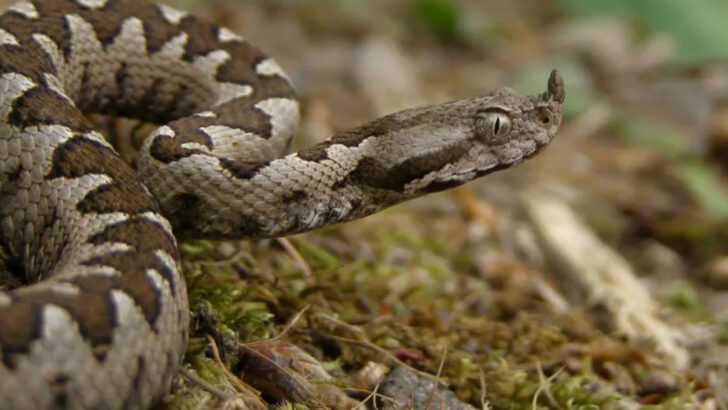The nose-horned viper, scientifically known as Vipera ammodytes, holds the title as Europe’s most venomous snake.
Known for its distinct horn-like structure on its snout, this snake has fascinated researchers and nature enthusiasts alike.
Found primarily in Southern Europe, from Italy to the Balkans, this viper is both feared and admired.
Its potent venom, characterized by its hemotoxic effects, can cause significant harm, though fatalities are rare with prompt medical treatment.
This article delves into 13 captivating facts about this intriguing reptile, exploring its habitat, behavior, and unique characteristics.
Distinctive Horn

The nose-horned viper stands out due to its distinctive horn, a scale protruding from its snout. This feature, reminiscent of mythical creatures, adds to the viper’s allure.
This horn, however, serves no known practical purpose. Researchers suggest it may play a role in camouflage, mimicking twigs or leaves. Such an adaptation could be vital in its natural habitat, helping it evade predators.
The horn’s presence is more pronounced in males, indicating a possible role in mating displays or territorial disputes.
Venom Potency

Renowned for its venom, the nose-horned viper possesses a potent hemotoxic venom. This venom disrupts blood clotting, causing tissue damage and intense pain.
Despite its fearsome reputation, fatalities are rare with timely medical intervention. Its venom composition varies, influenced by diet and environment. This variability presents challenges for antivenom production, requiring region-specific formulations.
Snake enthusiasts and herpetologists often emphasize the importance of understanding this venom’s role in the viper’s survival, aiding in prey capture and deterring threats.
Geographical Distribution

Native to Southern Europe, the nose-horned viper thrives in diverse environments, from rocky hillsides to forested valleys. Its range extends from Italy to the Balkans, adapting to various climates and terrains.
This adaptability is a testament to its evolutionary success, allowing it to occupy niches where other predators may struggle. Conservationists note its sensitivity to habitat loss, urging protection measures.
Observing this viper in the wild offers insights into the delicate balance of its ecosystem.
Behavioral Patterns

The nose-horned viper exhibits intriguing behavioral patterns, often preferring a sedentary lifestyle. It relies on ambush tactics, waiting patiently for unsuspecting prey.
When threatened, it assumes a defensive posture, coiling and hissing to deter aggressors. Such behavior underscores its role as both predator and prey, navigating the complexities of its ecosystem.
During mating season, males may engage in combat, showcasing their strength in ritualized displays. Understanding these behaviors enhances appreciation for this elusive reptile.
Reproduction and Life Cycle
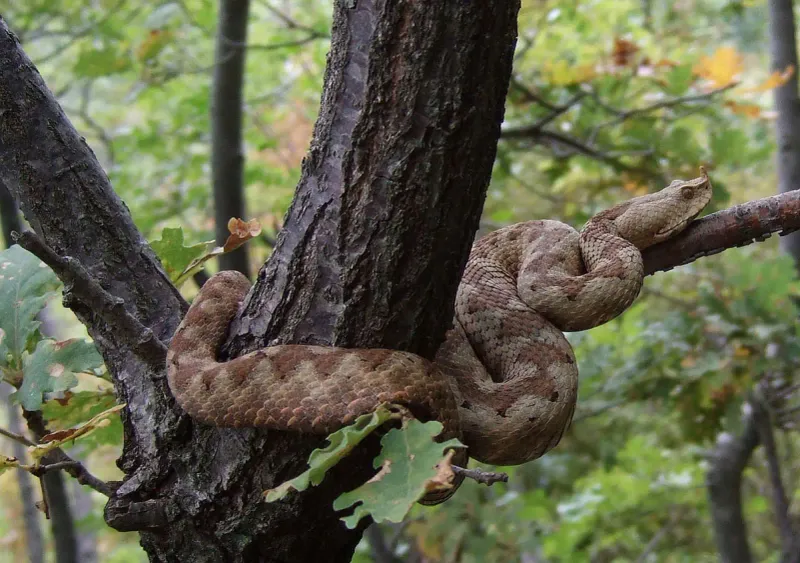
Reproduction in nose-horned vipers is a fascinating process, involving live birth rather than egg-laying. Females give birth to 5-15 young, each fully independent from birth.
This viviparous nature ensures higher survival rates in challenging environments. Mating rituals involve intricate dances, with males vying for attention through physical displays.
After birth, the young are left to fend for themselves, relying on instinct to navigate their surroundings. This independence is crucial, as it prepares them for the challenges ahead.
Diet and Hunting Techniques
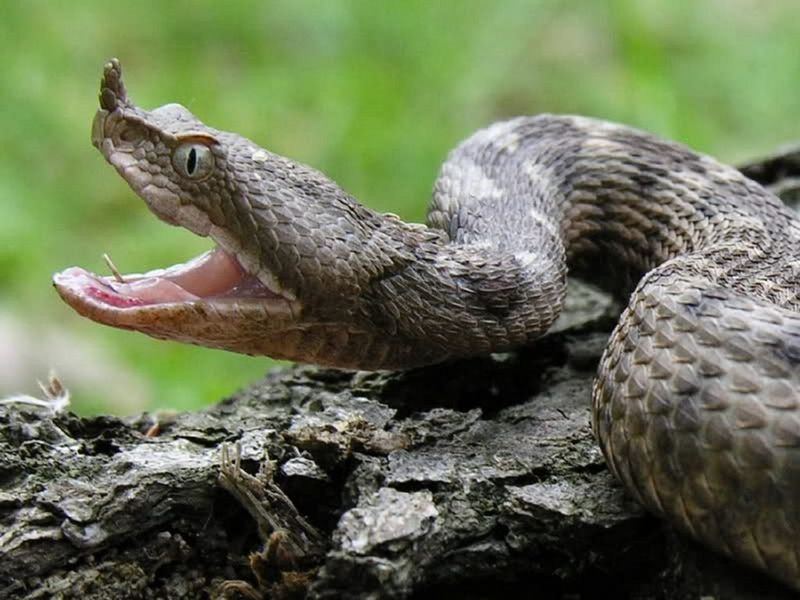
Primarily feeding on small mammals, birds, and reptiles, the nose-horned viper employs stealth and precision in its hunting techniques. Its camouflaged appearance aids in ambush, striking swiftly when prey comes within range.
Venom delivery is a critical aspect, immobilizing prey before consumption. This efficient hunting strategy has evolved to suit its diverse diet, showcasing adaptability in various environments.
Observing a viper in action reveals the intricate balance of predator-prey dynamics in its ecosystem.
Camouflage and Appearance
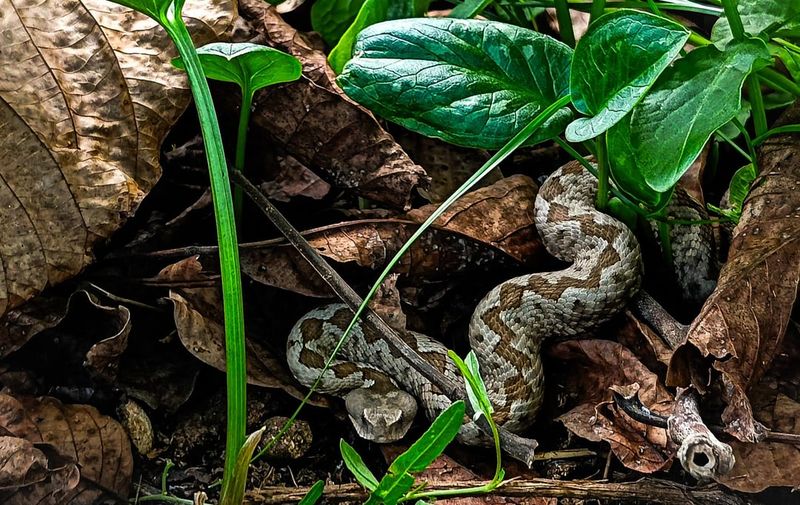
The nose-horned viper’s camouflage is a marvel of nature, allowing it to blend seamlessly into its surroundings. Its scale pattern mimics the rocky landscapes it inhabits, offering protection from predators and aiding in hunting.
This cryptic coloration varies among populations, influenced by local environment and climate. Such adaptability underscores the viper’s evolutionary success, navigating the challenges of its habitat.
The interplay between appearance and survival offers insights into the complexities of natural selection.
Cultural Significance

Throughout history, the nose-horned viper has held cultural significance, appearing in European folklore and mythology. Its distinct appearance and potent venom have inspired both fear and reverence.
Ancient art depicts the viper as a symbol of danger and protection. In some cultures, it represents wisdom and transformation, embodying the duality of life and death.
This rich cultural tapestry highlights the viper’s impact on human societies, reflecting our fascination with nature’s mysteries.
Conservation Status
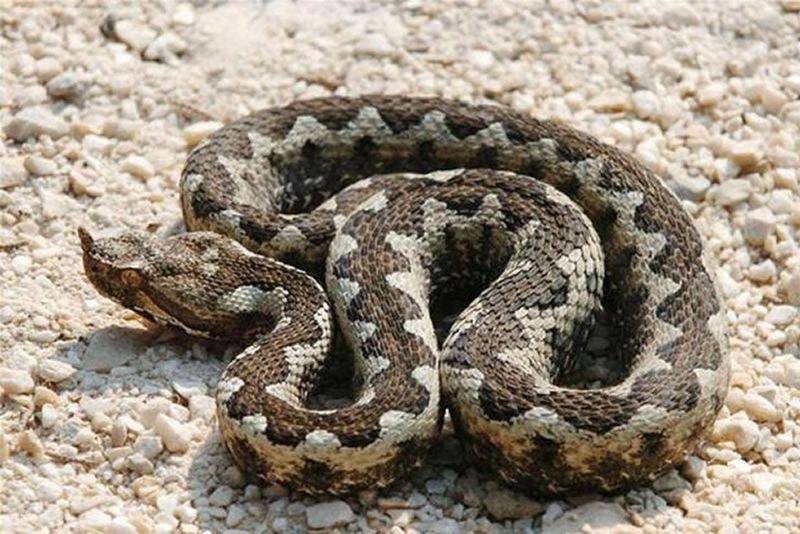
Conservation efforts for the nose-horned viper focus on habitat preservation and reducing human-wildlife conflict. While not currently endangered, certain populations face threats from habitat loss and illegal collection.
Conservationists emphasize education and awareness, promoting coexistence strategies in areas where humans and vipers intersect. Protecting this species is vital for maintaining ecological balance, as vipers play a crucial role in controlling rodent populations.
Support for conservation initiatives ensures the viper’s continued presence in its natural habitat.
Viper vs. Human Interaction

Interactions between humans and nose-horned vipers are often marked by fear and misunderstanding. Education plays a key role in reshaping perceptions, highlighting the viper’s ecological importance.
In rural areas, encounters are more frequent, necessitating awareness campaigns to reduce conflict. Precautionary measures, such as wearing protective clothing and avoiding known viper habitats, can minimize risks.
By fostering respect for this misunderstood reptile, communities can coexist peacefully with their slithering neighbors.
Adaptations for Survival
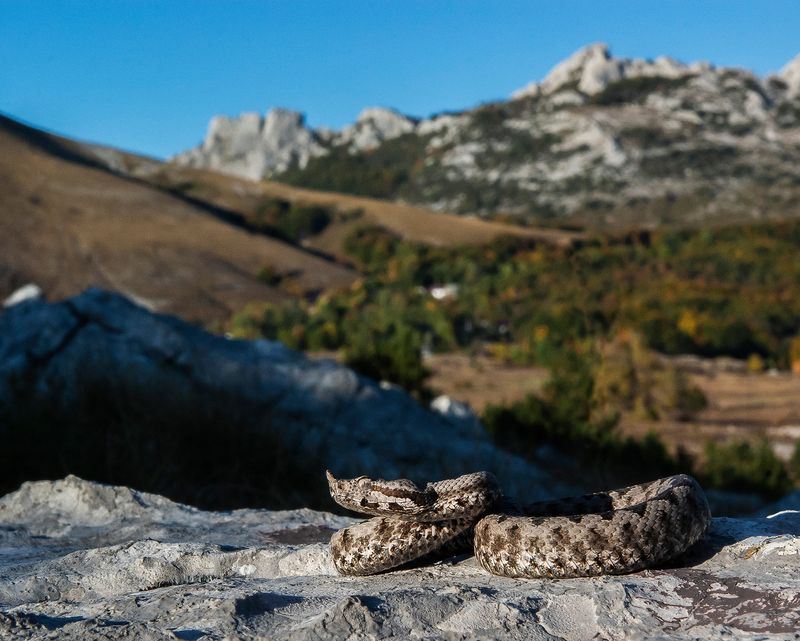
The nose-horned viper’s adaptations for survival are a testament to its resilience. Its ability to thrive in varied environments, from arid plains to lush forests, demonstrates remarkable flexibility.
Physiological adaptations, such as efficient metabolism and water conservation, allow it to endure harsh conditions. Behavioral strategies, including strategic basking and hibernation, optimize energy use.
These adaptations ensure the viper’s success across its range, highlighting the intricate dance of evolution in shaping species.
Predators and Threats

Despite its venomous nature, the nose-horned viper faces threats from natural predators such as birds of prey and mammals. These interactions illustrate the complex web of life in its ecosystem.
Human activities, including habitat destruction and road fatalities, pose additional dangers. Conservation efforts aim to mitigate these threats, ensuring the viper’s survival.
Understanding predator-prey dynamics is crucial for developing effective management strategies, preserving the delicate balance of nature.
Interesting Facts and Trivia

Did you know the nose-horned viper is often mistaken for other snakes due to its coloration? Its lifespan can reach up to 20 years in the wild, a testament to its adaptability.
This viper’s name, ‘ammodytes’, means ‘sand burrower’, reflecting its habitat preferences. Such trivia captivates enthusiasts, fostering a deeper appreciation for this remarkable species.
Sharing these facts can inspire conservation efforts, highlighting the viper’s role in nature’s intricate tapestry. Engaging with nature’s wonders enriches our understanding of the world.

